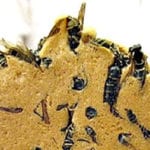 Misconceptions
Misconceptions  Misconceptions
Misconceptions  History
History 10 Amazing Roman Epitaphs
 Weird Stuff
Weird Stuff 10 Niche Subcultures That Are More Popular Than You Might Think
 Mysteries
Mysteries 10 Tragic Disappearances and Deaths in Joshua Tree National Park
 History
History 10 Ways Childhood Really Sucked in the Old West
 Music
Music 10 Name Origins of Famous Bands from the 1990s
 Religion
Religion 10 Biggest Turnarounds by the Catholic Church
 Weird Stuff
Weird Stuff 10 Unbelievable Times Laws Had Unintended Consequences
 Humans
Humans Ten Historic Women Who Deserve Way More Credit Than They Got
 Movies and TV
Movies and TV 10 Films That Spawned Major Lawsuits
 Misconceptions
Misconceptions 10 Phony Myths and Urban Legends That Just Won’t Die
 History
History 10 Amazing Roman Epitaphs
 Weird Stuff
Weird Stuff 10 Niche Subcultures That Are More Popular Than You Might Think
Who's Behind Listverse?

Jamie Frater
Head Editor
Jamie founded Listverse due to an insatiable desire to share fascinating, obscure, and bizarre facts. He has been a guest speaker on numerous national radio and television stations and is a five time published author.
More About Us Mysteries
Mysteries 10 Tragic Disappearances and Deaths in Joshua Tree National Park
 History
History 10 Ways Childhood Really Sucked in the Old West
 Music
Music 10 Name Origins of Famous Bands from the 1990s
 Religion
Religion 10 Biggest Turnarounds by the Catholic Church
 Weird Stuff
Weird Stuff 10 Unbelievable Times Laws Had Unintended Consequences
 Humans
Humans Ten Historic Women Who Deserve Way More Credit Than They Got
 Movies and TV
Movies and TV 10 Films That Spawned Major Lawsuits
10 Bizarre Ways To Be Killed By An Animal
Humans have been at the top of the food chain for quite some time, and it’s rather rare for people to be killed by animals these days. But occasionally, nature strikes back in circumstances that are either tragic . . . or bizarre.
10 The Mosquito, The Pharaoh, And The Razor Blade
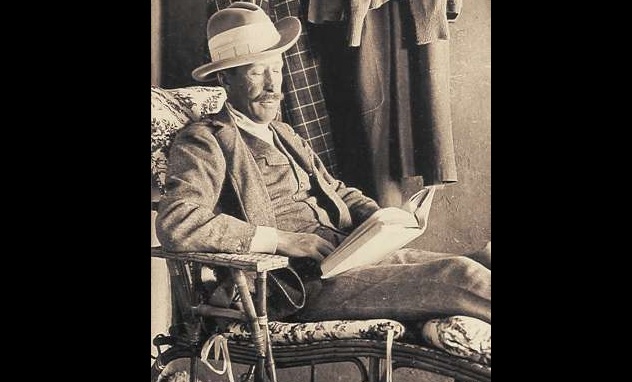
George Herbert, Fifth Earl of Carnarvon, was an English aristocrat in the early 20th century. While he was initially interested in breeding and racing horses, Lord Carnarvon’s greatest legacy was left in the world of Egyptology.
He launched his own excavations at Thebes in 1906, but he soon felt the need for professional oversight. That’s why he began collaborating with archaeologist Howard Carter, and the two published an account of their work in 1912. World War I forced them to take a break from excavations, but in 1922, Carter made one of the greatest discoveries in archaeological history: the undisturbed tomb of Tutankhamun.
Having spent quite a hefty sum on the project, Carnarvon was understandably thrilled and rushed over from England to open the tomb with Carter. The following year, their discovery was exhibited to a gathering of royalty, dignitaries, and journalists, all eager for a positive story after the gloom of the First World War and the Spanish flu. But a mere two months later, Carnarvon was dead.
While shaving one day, Carnarvon accidentally cut a mosquito bite on his face. He subsequently suffered a blood infection, followed by pneumonia. The illness spread to both lungs, and the earl passed away on April 5, 1923. His death was followed by bizarre rumors, with some claiming all the lights in Cairo flickered at the precise moment he died. Other said that King Tut had a matching cheek wound. The idea of a curse was endorsed by author Arthur Conan Doyle, who had recently entered his “fairies are real” stage.
Over the next 24 years, 13 others involved in the excavation also died, including Carter himself. The archaeologist succumbed to lymphoma in 1939, cementing the alleged curse in the popular imagination. Of course, these deaths represented a negligible amount of the people involved in the dig. Plus, it’s helpful to remember that the average age of death for those on Carter’s team was 73.
9 Suicide By Piranha

Despite their terrifying reputation and penchant for showing up in horror films, piranha attacks on humans are relatively rare. Fatalities are even rarer. Most attacks only result in minor injuries or, at most, the loss of a finger.
Furthermore, when they do attack, it’s often because they’ve been drawn to the area by people gutting fish or vacationers spilling food into the river. And in some instances, they might bite if they feel threatened. The biggest piranha attack in recent years (70 people were injured in Argentina) resulted from swimmers blundering into piranha mating grounds and triggering a brief yet hostile response.
In other words, it requires a highly specific set of circumstances for piranhas to actually kill a human. Another one of those circumstances involves a person choosing a highly unorthodox way to commit suicide. In December 2011, an 18-year-old Bolivian fisherman got himself drunk, worked up the courage to jump into a river, and allegedly took the fateful plunge. Even in this case, however, the man died of blood loss, so the much-feared fish didn’t devour him whole.
8 Britain’s First Tiger Fatality

In 2007, the BBC carried out a vote on Britain’s most unusual gravestones. The winner belonged to Sarah Johnson, a woman who died of dropsy in 1819. After Sarah’s death, her doctors paid for an ornate gravestone that detailed her treatment (including how much fluid they drained from her body) while serving as an ostentatious advertisement for their services.
One of the runners-up, however, was Hannah Twynnoy, a 33-year-old who was mauled to death by a tiger in 1703. Her tombstone, located in Malmesbury, recounts how:
In bloom of Life
She’s snatched from hence.
She had no room
To make defence.
For Tyger fierce
Took Life away.
And here she lies
In a bed of Clay
Until the Resurrection Day.
Apparently, a traveling circus had come to town, and their tiger was stabled at the tavern where Twynnoy might have worked as a barmaid. She took pleasure in teasing the creature, ignoring the admonitions of its keeper. Then one day, the cat either escaped or caught hold of her gown before tearing her to pieces. The tavern, by the way, was called the White Lion, which is a weird coincidence.
However, Twynnoy’s tale doesn’t end there. Her burial service was surprisingly expensive, leading some to speculate she was having an affair with a local nobleman. Eventually, a road was named after her, and on the 300th anniversary of her death in 2003, all the local girls named Hannah laid flowers on her grave.
7 Eaten By Dogs While Smeared With Cow Dung

Heraclitus was a pre-Socratic Greek philosopher who earned some pretty strange nicknames. He was known as “the obscure” because of his cryptic teachings and “the weeping philosopher” thanks to his melancholy disposition. Today, he’s best known for saying, “You cannot step in the same river twice.” After all, water is always moving, so when you step into a river a second time, the water will have changed.
As for the admittedly apocryphal account of his death . . . well, it’s just downright weird. Heraclitus apparently became such a misanthrope that he retreated into the mountains, where he lived on grass and herbs. This insufficient new diet gave him dropsy, and he returned to civilization to find a cure. The said remedy involved smearing himself with cow dung in an attempt to draw the “bad humors” out of his body.
This is where things get complicated. As it turns out, there are three different stories of how he met his end. In one tale, he drowns under all that wet dung. In the second story, he’s baked to death while lying in the sun, trying to dry the cow feces. And in the third tale, the dung renders him so unrecognizable that he is devoured by a pack of dogs.
This final account poses several obvious questions. Most importantly, do dogs actually like to eat cow dung? Of course, things probably didn’t happen this way, but the account of his death does have several interesting connections to Heraclitus’s teachings. For example, he has one anecdote that goes, “Corpses are more worthy to be thrown out than dung.” Heraclitus also disliked doctors, so dying as a result of his bizarre “cure” is something of a snide comeback.
Another one of his sayings went, “Dogs bark at those they don’t know.” This is expanded to dogs devouring someone they don’t know because he’s made the baffling decision to smear himself with feces. Being torn apart by dogs was also a punishment commonly attributed to those seen as enemies of religion, a status Heraclitus attained through his opposition to worshipping statues and using blood in purification rites. The fact that Heraclitus openly despised humanity meant that he had plenty of enemies who would pervert his teachings when recounting his death.
6 Gored By A Goat

Robert Boardman was a 63-year-old hiker with plenty of experience. In October 2010, he was making his way through the Olympic National Park in Washington, alongside his wife and a friend. But while trekking through the wilderness, a goat began acting aggressively toward Boardman and his group. Boardman told the others to go on ahead while he got rid of the creature, and he began trying to shoo it away.
The others ran back when they heard him screaming.
When Boardman’s wife and friend returned to the scene, they found the goat had gored his leg. The animal then stood over his body for an hour before it was driven off by a hail of rocks. Unfortunately, it was too late to save Boardman, despite being airlifted to a hospital.
Park rangers subsequently tracked down and killed the blood-drenched goat, which had been known for its aggressive behavior. The rangers also posted signs that warned hikers to stay 30 meters (100 ft) away from wildlife. Subsequently, it’s been alleged that the rangers had “hazed” the animal, trying to instill the goat with a fear of humans by shooting it with bean bags and pelting it with rocks.
Others have blamed human interference with nature. Originally, the goats were introduced to the area in the 1920s to give human hunters new prey. Once hunting the animals became illegal, their population increased to over 300, and their regular contact with people rendered them unafraid of humans. (It probably didn’t help that some hikers were feeding them.) The deceased’s wife later attempted to sue the park, but she lost the case.
5 The Herpetologist Who Unwittingly Chronicled His Death
Karl P. Schmidt was a world-renowned herpetologist working at Chicago’s Lincoln Park Zoo. In September 1957, a snake was brought to Schmidt for identification. The scientist recognized it as a boomslang, a serpent from sub-Saharan Africa. Seeking to confirm this classification, he removed the snake from its bag for a closer examination . . . and was bitten on the thumb.
This was somewhat unlucky for Dr. Schmidt. The bloomslang is a rear-fanged snake, which means that its fangs are far to the back of its mouth. In order to deliver a venomous bite, the snake is required to open its mouth quite wide. In other words, it’s very difficult for the boomslang to inject a person with venom, and it was due to this anatomical makeup that in 1957, most scientists thought the boomslang was harmless.
So it should come as no surprise that Schmidt wasn’t worried about the bite and casually returned home. However, he did realize the incident would give him unique insight into the effects of boomslang venom, and thus he began to document his symptoms. These progressed from nausea to shaking chills to vomiting and urinating blood. Nevertheless, in his diary, Schmidt still seemed rather nonplussed. In one entry, the researcher wrote:
September 26. 6.30 AM: Temperature 98.2 [36.7 °C]. Ate cereal and poached eggs on toast and apple sauce and coffee for breakfast. No urine with an ounce or so of blood about every three hours. Mouth and nose continuing to bleed, not excessively.
Shortly after this entry, Schmidt became unresponsive. When a doctor arrived, he found the herpetologist drenched in sweat. As Schmidt was rushed to the hospital, the physician attempted to revive him, but it was to no avail. Schmidt was pronounced dead on arrival. While the immediate cause of death was respiratory failure, a subsequent autopsy noted bleeding from the lungs, eyes, heart, kidneys, and brain.
Since Schmidt’s death, there have been at least seven documented deaths from boomslangs, and the animal is now considered one of the most venomous snakes in Africa.
4 Suicide By White Tiger
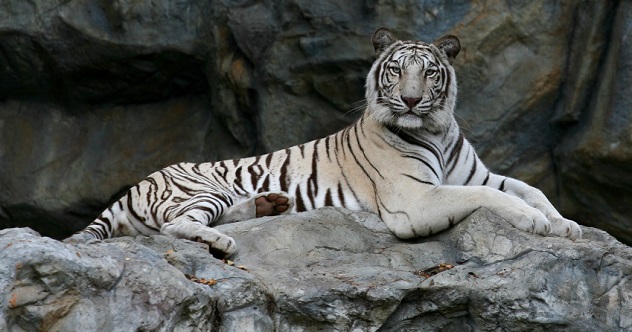
Contrary to popular belief, white tigers are not a distinct subspecies of tiger. Instead, they’re members of the Bengal subspecies, albeit with a genetic mutation. Their presentation in zoos has caused controversy as their existence is based on severe inbreeding. Most of these animals are descendants of a single individual captured in 1951, which has resulted in a disturbing list of deformities. Despite these moral concerns, white tigers remain incredibly popular, including the trio that formerly inhabited the Singapore Zoo.
In November 2008, Nordin Bin Montong, a cleaner who worked at the Singapore Zoo’s chimpanzee enclosure, was acting strangely. He was seen shouting and throwing things, and he even told some of his coworkers, “Goodbye, you won’t be seeing me again.” Then, while on his lunch break, Nordin jumped into the white tiger enclosure and waded through the moat, still carrying his bucket and mop. The largest tiger lashed at his face, and Nordin fell into a fetal position.
That’s when the tigers started mauling him.
Horrified zoo visitors tried to distract the cats by throwing rocks. Eventually, the tigers were lured back into their pens. Once the animals were confined, zoo staff rushed in to rescue the wounded man. Zoo vets tended to Nordin while awaiting the ambulance, but sadly, he was pronounced dead by paramedics.
3 Head Trauma By Flying Stingray
Fatal stingray attacks on humans are exceedingly rare. When they do occur, they’re usually the result of the tail barb, which is venomous in some species. This was the cause of the most famous stingray-related death, that of Australian conservationist Steve Irwin. The wildlife personality bled out after being pierced in the heart back in 2006. Irwin was probably attacked because the creature mistook him for a predatory shark.
A mere month after Irwin’s death, an octogenarian from Florida was lucky to survive when a spotted eagle ray landed in his boat and nearly stabbed him in the heart. Evidently, this specific species has a bad habit of leaping out of the water. The reasons for this are unclear, though some have speculated that it’s a means to dislodge parasites.
In any case, it was while engaging in this flamboyant activity that a spotted eagle ray collided with a Florida boater named Judy Kay Zagorski. But unlike the previous incident, Zagorski was not injured by the stinger. Instead, the ray’s hefty weight, combined with the velocity of the boat, caused Zagorski to fall over and hit her head on the deck. Unfortunately, the impact killed her.
2 Drunk Chimpanzees Named After Iraqi Dictators
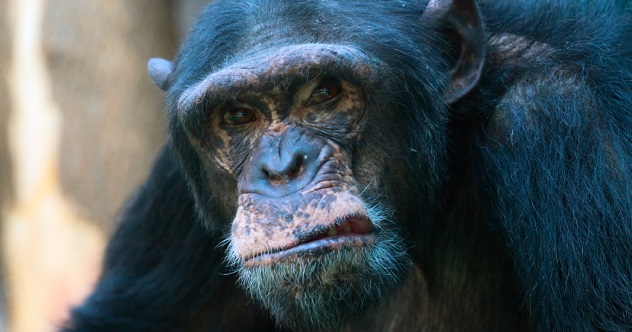
As befits their status as humanity’s closest relatives, chimpanzees seem to share our penchant for violence. This includes “wars” between neighboring chimp groups, such as those witnessed by famed researcher Jane Goodall in Tanzania’s Gombe Stream National Park, and more recently, a decade-long conflict in Uganda’s Kibale National Park. As such, it’s perhaps unsurprising that they have, on occasion, killed humans.
Invariably, chimps target the vulnerable, and this means they often prey on children. In Gombe, an individual named Frodo killed and ate a 14-month-old child in 2002. Kibale, meanwhile, was plagued throughout the mid-to-late-1990s by Saddam, a chimp named after the infamous Iraqi dictator. Saddam was a highly adaptable loner, as the rest of his group had perished due to deforestation and poaching. Over the years, he’d become quite skilled at stealing human crops, and eventually, Saddam grew bold enough to snatch a child off a woman’s back.
His reign of terror reached a crescendo in the summer of 1998, over the course of which he attacked seven children and killed two. After killing an 18-month-old girl, he was tracked by hunters, surrounded by men armed with spears, and dispatched with a rifle.
There are several theories as to why chimps have seemingly grown more violent and prone to attacking humans in recent years. Some believe the desperation caused by habitat loss is an important factor. It’s also thought that chimps in Uganda have been raiding illegal brewing operations and imbibing alcohol, leaving them more prone to violence.
1 Falling Cows
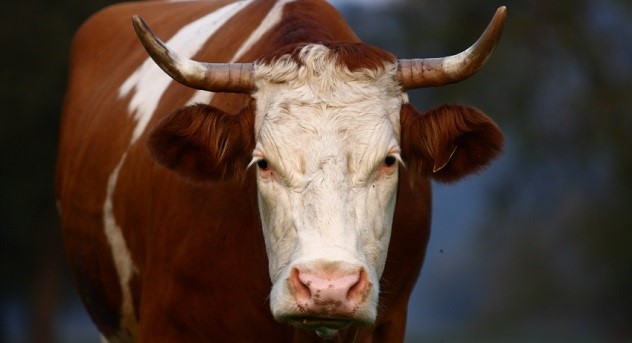
In July 2013, a Brazilian man named Joao Maria de Souza was sleeping alongside his wife in the town of Caratinga when a cow fell through his roof. The 1.5-ton creature was apparently grazing on a hill beside the couple’s home when it stepped onto the thin corrugated roof. Unfortunately, the animal fell 2.4 meters (8 ft) to the bed, right on top of de Souza.
At first, de Souza seemed to be relatively okay. He was taken to a hospital with a fractured leg, but he was conscious and speaking normally. Unfortunately, he died of internal bleeding while waiting to be examined by doctors. His family blamed the unacceptable wait time for his death, although his grieving mother did tell the media, “I didn’t bring up my son to be killed by a falling cow.” As for de Souza’s wife, she escaped unharmed. So did the cow.
Even stranger, this was the third such incident that had occurred in the area in the past three years. (It makes a little more sense when you realize the region is known for its cattle industry.) The first accident saw a cow fall into an unoccupied house, while the second saw a baby and small child almost crushed to death by the falling animal.
A kangaroo tried tried to eat Tyler when he was a child. Email him at [email protected].








